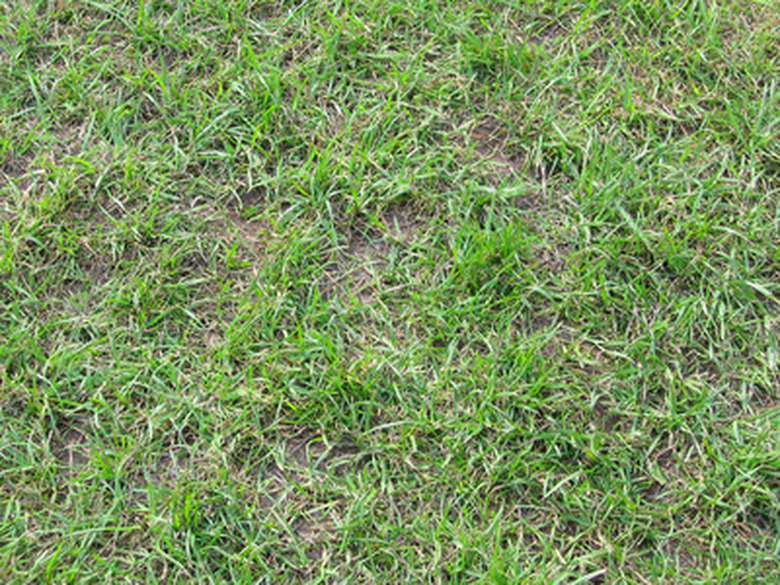The Best Soil To Grow Grass
We may receive a commission on purchases made from links.
Grass needs well-draining soil, and sand is the fastest-draining type of soil there is. On the other hand, grass needs soil that is able to retain moisture, and that's a feature of clay. When sand and clay are combined in the proper proportions with silt, which is also a fast-draining soil with smaller particles than grains of sand, you've got loam, and that's the best soil on which to grow grass.
Another soil characteristic to consider when sowing grass seed, laying new turf or maintaining your existing lawn is the pH, which is a measure of the acidity or alkalinity of the soil. The best soil for grass is slightly acidic to neutral. If the soil is too acidic or too alkaline, the grass can't absorb the nutrients in it, which obviates the third characteristic of good soil: the availability of nutrients to produce green foliage, strong roots and resistance to disease.
Loamy Soil Is the Best
Loamy Soil Is the Best
You can tell if the soil in your yard is loamy by scooping up some with your hands and forming it into a ball. If the soil won't retain its shape, it has too much sand and is probably nutrient deficient, but if it packs together and forms a hard sphere, it has too much nutrient-rich clay and won't allow the roots to breathe. Loamy soil will form a ball, but the ball will fall apart on its own as soon as you put it down.
The best way to amend sandy soil is to mix in organic material, such as compost, dead leaves or grass clippings. You can improve moisture retention by mixing in peat moss, coconut coir or vermiculite, but none of these adds nutrients. Turning in organic material can also help amend clay soil by separating the compacted clay particles, but using a core aerator is also recommended to allow oxygen to circulate.
The Best Soil Is pH Neutral
The Best Soil Is pH Neutral
The pH scale extends from 0 to 14, with values below 7 signifying acidic soil and values above 7 signifying alkaline soil. Most grass species thrive in soil with a pH between 6.5 and 7.0. If you have an existing lawn that's turning brown while weeds seem to be thriving, the pH is probably too low because weeds tend to like acidic soil. The best way to amend acidic soil is to measure the pH with a soil test and add garden lime at a rate determined by the actual pH.
If the soil test reveals a pH of 8.0 or more, the grass will have a hard time absorbing nutrients and won't thrive. The best way to lower the pH is to spread organic matter and let it decompose, but if you're in a hurry, you can spread elemental sulfur. Again, the amount you need depends on the actual pH of the soil.
Good Soil Is Nutrient Rich
Good Soil Is Nutrient Rich
Besides pH, a soil test will also reveal the nutrient content of the soil, and if it's less than it should be, you can remedy that with fertilizer. The most important nutrient for grass is nitrogen, so grass fertilizers typically have a high nitrogen (N) content because that element passes out of the soil quickly and needs to be replenished.
Choose a grass fertilizer with an N-P-K ratio that's appropriate for the situation. For example, Scotts Turf Builder is a 32-0-4 blend that provides plenty of nitrogen for healthy green blades with no additional phosphorous, while Schultz Super 16-16-16 is a balanced blend that nourishes the roots as well as the blades and is a great choice for a new lawn that is just starting out.
